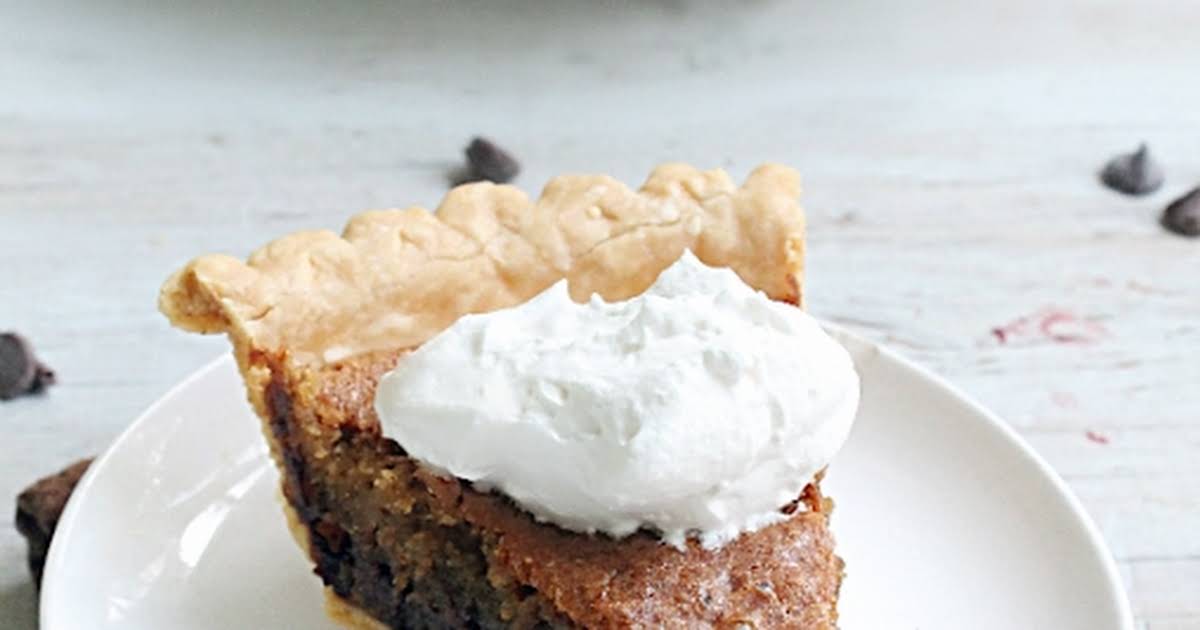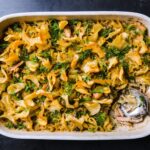Craving delicious pie but have nut allergies or dietary restrictions? Fear not! This comprehensive guide dives into the delightful world of nut-free pies, showcasing a variety of classic and innovative recipes designed for both safety and sensational flavor. Discover how to create perfectly textured crusts, explore exciting filling combinations that avoid nuts entirely, and learn the secrets to baking stunning, allergy-friendly pies that will impress even the most discerning palates. From traditional apple pie with a twist to unexpected flavor pairings, this guide provides the knowledge and confidence to bake with ease and delight.
We’ll explore the rising demand for nut-free baking, addressing the various reasons behind this trend – from severe allergies and sensitivities to personal preferences. You’ll find detailed, step-by-step instructions for creating several classic pie types, each adapted to be completely nut-free, along with innovative recipes for unique and delicious fillings and crusts. Visual descriptions will guide you through the process, ensuring you achieve the perfect texture, aroma, and appearance in your nut-free masterpieces. We’ll also cover troubleshooting tips and tricks to ensure your baking journey is smooth and successful.
Classic Nut-Free Pie Recipes
These recipes offer delicious alternatives to classic pies, ensuring everyone can enjoy a slice, regardless of nut allergies. Each recipe provides a satisfyingly similar experience to its nut-containing counterpart, focusing on texture and flavor profiles to mimic the traditional experience. We’ve carefully selected ingredients and techniques to create pies that are both safe and scrumptious.
Classic Nut-Free Apple Pie
| Name | Ingredients | Steps | Notes |
|---|---|---|---|
| Classic Nut-Free Apple Pie |
|
|
Use a mix of apples for a complex flavor and texture. Ensure the apples are evenly coated in the spice mixture. |
Visual Description: A warm, golden-brown crust encases a glistening filling of tender apple slices, their edges slightly caramelized. The aroma is a comforting blend of cinnamon, nutmeg, and baked apples, with a hint of sweetness from the brown sugar. The texture is a delightful contrast between the flaky crust and the soft, juicy apples.
Comparison to Traditional Pie: This nut-free version maintains the classic apple pie experience. The flavor profile is virtually identical, with the absence of nuts being barely noticeable.
Pumpkin Pie Without Nuts
| Name | Ingredients | Steps | Notes |
|---|---|---|---|
| Pumpkin Pie Without Nuts |
|
|
For a richer flavor, use full-fat evaporated milk. Let the pie cool completely to allow the filling to set properly. |
Visual Description: A deep amber filling, smooth and creamy, rests within a golden-brown crust. The aroma is warm and inviting, dominated by the scent of pumpkin spice. The texture is rich and velvety, with a slight jiggle when gently shaken.
Comparison to Traditional Pie: This nut-free pumpkin pie replicates the classic version beautifully. The flavors are indistinguishable, and the creamy texture remains unchanged.
“Pecan” Pie with Sunflower Seeds
| Name | Ingredients | Steps | Notes |
|---|---|---|---|
| “Pecan” Pie with Sunflower Seeds |
|
|
Toasting the sunflower seeds enhances their flavor. Don’t overbake, as the filling will continue to set as it cools. |
Visual Description: The pie boasts a rich, golden-brown filling speckled with toasted sunflower seeds. The aroma is sweet and slightly nutty, with hints of caramel from the corn syrup. The texture is dense and slightly chewy, with a pleasant crunch from the seeds.
Comparison to Traditional Pie: While the sunflower seeds provide a satisfying crunch similar to pecans, the flavor is slightly different. The sunflower seeds offer a milder, less intensely “nutty” flavor than pecans, creating a unique, yet still delicious, pecan pie alternative.
Creative Nut-Free Pie Fillings

Unleash your inner pastry chef with these three inventive nut-free pie fillings, each boasting a unique flavor profile and texture. These recipes demonstrate the versatility of nut-free baking, proving that deliciousness doesn’t require nuts. The fillings are designed to complement both classic shortcrust and more modern graham cracker crusts, offering a delightful range of flavor experiences.
Lavender Honey Blackberry Pie Filling
This filling marries the floral notes of lavender with the sweetness of honey and the tartness of blackberries, creating a sophisticated and unexpectedly delicious combination. The lavender adds a subtle perfume, enhancing the blackberry’s natural sweetness without overpowering it. The honey provides a rich, complex sweetness that balances the tartness beautifully. Achieving the perfect consistency involves a gentle simmer to allow the blackberries to break down slightly, creating a luscious, jam-like texture without becoming overly runny.
The filling is prepared by gently simmering blackberries with honey and a touch of lemon juice until the berries soften and release their juices. A small amount of cornstarch is added to thicken the mixture to a spreadable consistency. Finally, culinary lavender buds are infused into the warm mixture, releasing their delicate aroma and flavor. This filling works beautifully with a buttery shortcrust pastry, allowing the subtle lavender notes to shine through. For a graham cracker crust, the slightly more robust flavor of the crust complements the sweetness of the honey and blackberry, offering a delightful textural contrast.
Cardamom-Spiced Pear and Ginger Pie Filling
This warm spiced filling combines the sweetness of pears with the zing of ginger and the aromatic warmth of cardamom. The cardamom provides a unique, slightly earthy spice note that complements the pear’s sweetness and the ginger’s bite, creating a complex and inviting flavor profile. The pears are cooked until tender, but retain a slight bite, providing a pleasing textural contrast to the creamy filling.
The filling process begins by sautéing thinly sliced pears with fresh ginger until softened. Then, ground cardamom, a touch of brown sugar, and a squeeze of lime juice are added to enhance the flavors. A small amount of tapioca starch helps to create a smooth, glossy filling. This spiced pear and ginger filling pairs exceptionally well with a classic shortcrust pastry. The richness of the butter crust complements the warmth of the spices. Alternatively, using a graham cracker crust adds a slightly crunchy counterpoint to the soft pear filling, further enhancing the overall textural experience.
Roasted Sweet Potato and Maple Pecan-Free Filling
This unique filling uses roasted sweet potatoes as a base, creating a naturally sweet and creamy texture without the need for nuts. The maple syrup adds a rich, caramel-like sweetness, while the pecan-free alternative (sunflower seeds, toasted and finely chopped) provides a pleasant crunch. This filling offers a comforting and satisfying experience.
The preparation begins by roasting sweet potatoes until tender. Once cooled, the potatoes are mashed and combined with maple syrup, a touch of cinnamon, and the toasted sunflower seeds. A pinch of salt balances the sweetness, enhancing the overall flavor. This filling is incredibly versatile and works beautifully with both a shortcrust and a graham cracker crust. The shortcrust crust provides a buttery base that complements the sweetness of the sweet potato, while the graham cracker crust offers a contrasting texture and a subtle nutty flavor that enhances the overall flavor profile.
Nut-Free Crusts and Toppings
Creating the perfect pie begins with a flawlessly crafted crust. This section explores three distinct nut-free crust options, catering to various dietary needs and preferences, followed by a selection of delightful and nut-free toppings to elevate your pie creations to new heights of deliciousness. Each recipe is designed for ease of preparation, yielding a satisfying and flavorful result.
Traditional Pie Crust (Nut-Free)
This classic pie crust recipe omits nuts entirely, focusing on the buttery, flaky texture that defines a perfect traditional pie. The key is using high-quality, cold ingredients and gentle handling to prevent the gluten from developing too much, resulting in a tender crust.
- Combine 2 1/2 cups all-purpose flour, 1 teaspoon salt, and 1 cup (2 sticks) cold unsalted butter, cut into small pieces, in a large bowl. Using a pastry blender or your fingertips, cut the butter into the flour mixture until it resembles coarse crumbs.
- Gradually add 6-8 tablespoons of ice water, one tablespoon at a time, mixing lightly until the dough just comes together. Do not overmix.
- Form the dough into a disc, wrap it in plastic wrap, and refrigerate for at least 30 minutes.
- On a lightly floured surface, roll out the dough into a 12-inch circle. Carefully transfer the dough to a 9-inch pie plate. Trim and crimp the edges.
This crust offers a familiar, buttery flavor and a tender, flaky texture. Preparation is straightforward, ideal for bakers of all skill levels.
Gluten-Free Pie Crust (Nut-Free)
For those with gluten sensitivities, this recipe provides a delicious and satisfying alternative. The blend of almond flour (ensure it’s certified nut-free if needed for severe allergies), tapioca starch, and other ingredients creates a naturally gluten-free crust with a subtly sweet flavor. It may be slightly more delicate than a traditional crust, but its unique character adds a delightful twist.
- In a large bowl, whisk together 1 1/2 cups almond flour (ensure it is certified nut-free if necessary), 1/2 cup tapioca starch, 1/4 cup granulated sugar, 1/2 teaspoon salt, and 1/2 teaspoon xanthan gum.
- Cut in 1/2 cup (1 stick) cold unsalted butter, using a pastry blender or your fingers, until the mixture resembles coarse crumbs.
- Gradually add 4-6 tablespoons of ice water, mixing until the dough just comes together. Do not overmix.
- Form the dough into a disc, wrap it in plastic wrap, and refrigerate for at least 30 minutes.
- On a lightly floured surface (using rice flour or tapioca starch), roll out the dough into a 12-inch circle. Carefully transfer the dough to a 9-inch pie plate. Trim and crimp the edges.
This crust possesses a slightly crumbly texture and a delicate, subtly sweet flavor. It’s slightly more challenging to work with than traditional crusts due to its gluten-free nature, requiring careful handling.
Vegan Pie Crust (Nut-Free)
This vegan pie crust is entirely free of both nuts and animal products, making it a perfect option for those following a plant-based diet. The combination of gluten-free flour blend and vegan butter creates a surprisingly flaky and flavorful crust.
- In a large bowl, combine 2 cups gluten-free all-purpose flour blend (ensure it is nut-free), 1/2 teaspoon salt, and 1/4 cup granulated sugar.
- Cut in 1 cup (2 sticks) cold vegan butter, using a pastry blender or your fingers, until the mixture resembles coarse crumbs.
- Gradually add 6-8 tablespoons of ice water, mixing until the dough just comes together. Do not overmix.
- Form the dough into a disc, wrap it in plastic wrap, and refrigerate for at least 30 minutes.
- On a lightly floured surface, roll out the dough into a 12-inch circle. Carefully transfer the dough to a 9-inch pie plate. Trim and crimp the edges.
This crust provides a slightly more tender texture than a traditional crust and has a mild, buttery flavor. Its ease of preparation is comparable to a traditional crust.
Nut-Free Pie Toppings
A variety of delicious and nut-free toppings can complement your nut-free pies, adding both visual appeal and textural contrast.
- Whipped Cream: A classic topping, easily made by whipping heavy cream (or a plant-based alternative) with powdered sugar and a touch of vanilla extract until soft peaks form. The resulting topping is light, airy, and subtly sweet, offering a delightful contrast to richer pie fillings.
- Fruit Compote: A homemade fruit compote adds a burst of fresh flavor and vibrant color. Simply simmer your favorite fruits (berries, apples, peaches) with a little sugar and lemon juice until softened and slightly thickened. This topping offers a delightful balance of sweetness and acidity.
- Meringue: A meringue topping provides a visually stunning and texturally interesting contrast. Beat egg whites (or aquafaba for a vegan option) with sugar until stiff, glossy peaks form. Pipe or spread the meringue over the pie and bake until lightly golden brown. The meringue adds a sweet, airy lightness to the pie.
Baking nut-free pies doesn’t mean sacrificing flavor or texture. This guide has equipped you with the knowledge and recipes to create a stunning array of sweet treats, perfectly tailored to meet various dietary needs and preferences. From mastering the perfect nut-free crust to exploring creative filling combinations, you’ve learned the secrets to baking pies that are both safe and incredibly delicious. So, gather your ingredients, preheat your oven, and embark on a culinary adventure filled with sweet success and the joy of sharing your delectable creations with friends and family. Embrace the possibilities of nut-free baking and let your culinary creativity shine!
Detailed FAQs
Can I freeze nut-free pies?
Yes, most nut-free pies freeze well. Wrap them tightly in plastic wrap and then foil before freezing for optimal quality.
What are some good substitutes for pecans in a pecan pie?
Pumpkin seeds, sunflower seeds, or even a combination of different seeds can provide a similar texture and slightly nutty flavor.
How can I prevent my pie crust from shrinking during baking?
Chill the dough thoroughly before rolling and baking. Avoid over-handling the dough, and bake at a lower temperature for a longer time.
How do I tell if my pie is fully baked?
The filling should be set, and the crust should be golden brown. A toothpick inserted into the center should come out clean.
Are all store-bought pie crusts nut-free?
No, always check the ingredient list carefully, as many store-bought crusts contain nuts or nut products.


